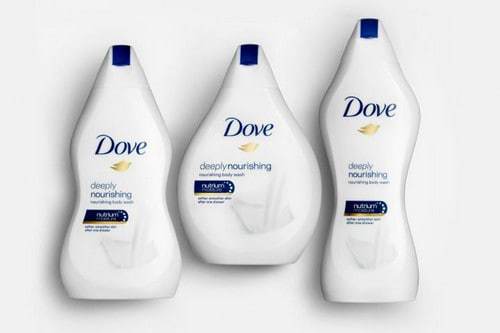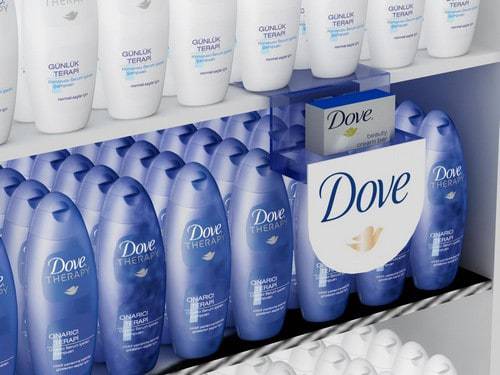The personal care & skincare brand Dove is the flagship brand of the FMCG giant Unilever. It was introduced by the MNC in the year 1957 & initially the products were launched for women later on the brand has extended its product lines by making products available for Men and Baby segment.
Dove products are manufactured in more than 21 countries globally and are being sold & marketed by the parent company Unilever Ltd. in 80+ countries worldwide.
The brand has been in controversy due to its ads of Body lotion prompting racial discrimination and due to its Campaign for Real Beauty.
Table of Contents
Segmentation, targeting, positioning in the Marketing strategy of Dove –
Dove has specifically defined the segments of customers which it has to focus on Men, Women and Baby are the categorization of customers it is catering to. These customers are from the middle and upper-middle-income class.
The brand has been using selective targeting strategy by targeting the customers from the emerging nations to whom how they look is of utmost importance.
Dove has been positioned as a skin enrichment, beauty care and moisturizing brand helping the customer to improve their self-image & self-esteem and realizing their real beauty.
Marketing mix – Here is the Marketing mix of Dove.
SWOT analysis – Here is the SWOT analysis of Dove.
Mission- “To ensure that the next generation grows up enjoying a positive relationship with the way they look—helping young people raise their self-esteem and realize their full potential.”
Vision- “To help women everywhere develop a positive relationship with the way they look, helping them raise their self-esteem and realize their full potential”
Tagline-“Moisturizing cream”
Competitive advantage in the Marketing strategy of Dove –
1. Parent Brand:
The Unilever is the well-known brand in the Consumer Goods industry selling more than 400 brands in 190+ countries globally and serving more than 2.5 billion consumers every day. Also, 13 of the world’s top 50 brands are owned by Unilever.
2. R & D Spend:
Tracking consumer sentiments, partnering with experts in the fields of Health& nutrition, psychology and body image along with cracking the inter-linkages relationship through 25 data centers around the world is what helps the brand Dove in being ahead of the beer brands in the market.
BCG Matrix in the Marketing strategy of Dove –
Dove operates in business segments such as Skincare, Haircare and Deodorants.
In Skincare it has the complete portfolio of products for all customer groups i.e. for Men, women, Baby in form of body wash, skin cleansing, lotion, Body cream and body bar. This segment of business along with Hair care products generates a majority of the business of the brand and hence, therefore, is stars in the BCG matrix.
Its Deodorant product category is struggling as the company have the very thick presence in the antiperspirant deodorants segments competing with various National and International brand, so it is the question mark in the BCG matrix.
Distribution strategy in the Marketing strategy of Dove –
The company closely work with Smallholders farmers and small-scale retailers through initiatives such as Kabisig and Shakti amma. 58% of the turnover of the brand comes from the emerging markets where there is exponential growth in the migration of people and hygiene factors.
The brand has been distributing the products through Wholesalers/distributors, Retailers, supermarket chains and e-commerce websites.
The brand successful distribution strategy lies in the fact that the products are distributed through the network of 410 warehouses to 26 million retail outlets worldwide.
Brand equity in the Marketing strategy of Dove –
Dove follows the brand strategy of 70:20:10 wherein 70% of the innovative product’s rollout takes ace on the global basis, 20% approx of the portfolio consist the local innovations marketed by the global brands and 10% are hyper-local introductions keeping in view the local taste & requirements.
To build the essence of the brand, it started associating with the stories of the women through self-esteem project to reshape the perception of the consumers on what makes them beautiful and confident.
Competitive analysis in the Marketing strategy of Dove –
The parent company of the brand Dove i.e. Unilever strives to create sustainable value through Unilever Sustainable Living Plan (USLP) in order of being an environment-friendly company having the positive social impact on the society through highlighting the nourishing and environmental & natural benefits of the Dove products.
The brand believes in being Glocal, as 70% of the local management leaders of the brand are local in order to help the brand in becoming the truly Glo-cal brand.
Dove is popularly known for its moisturizing effect, keeping skin soft and healthy. It competes with brands such as Nivea, Loreal, Ayur, Oly, Revlon, Jhonson & Jhonson etc.
Market analysis in the Marketing strategy of Dove –
In 2017 Dove has introduced the Babycare Dove which it rolled out in 19 markets and with the help of the research, Survey and its findings, company has been doing product development and market development to strengthen its presence in the emerging markets.
Increasing awareness about the Hygiene factors, Changing Sociocultural thinking of the customers shaped by the social networking sites and self-awareness among the people of the emerging nations are some of the factors contributing to the expansion of the skincare and personal care segment of the brand Dove.
Customer analysis in the Marketing strategy of Dove –
Customers of Dove are those who take extra care of their body, Hair, and physical wellbeing. These customers are affluent and always want to use only those products which have minimal or no chemical effects on the body/ Hair.
Although customers of the brand are in the age group of 15-50 years majority of the customers targeted by the brand are female, young and independent working women.
The brand has been launching several campaigns for customers to educate them how the brand is changing the social perception of the people.
Liked this post? Check out the complete series on Strategies


I would like to learn about how market my company product which is Hand sanitizer gel. We are new in to market and business. I would like to avoid failure in business, to this what precautions to be taken.
Please suggest or be as consultant to get good market.
Hitesh,
I enjoyed your article outlining Dove’s strategy. I’m working on a project for an Intro to Marketing class to detail Dove’s customer segmentation, I was wondering where you found the information for the customer analysis section of your writing?
Wow me too !! haha. i need to know for citation reasons XD